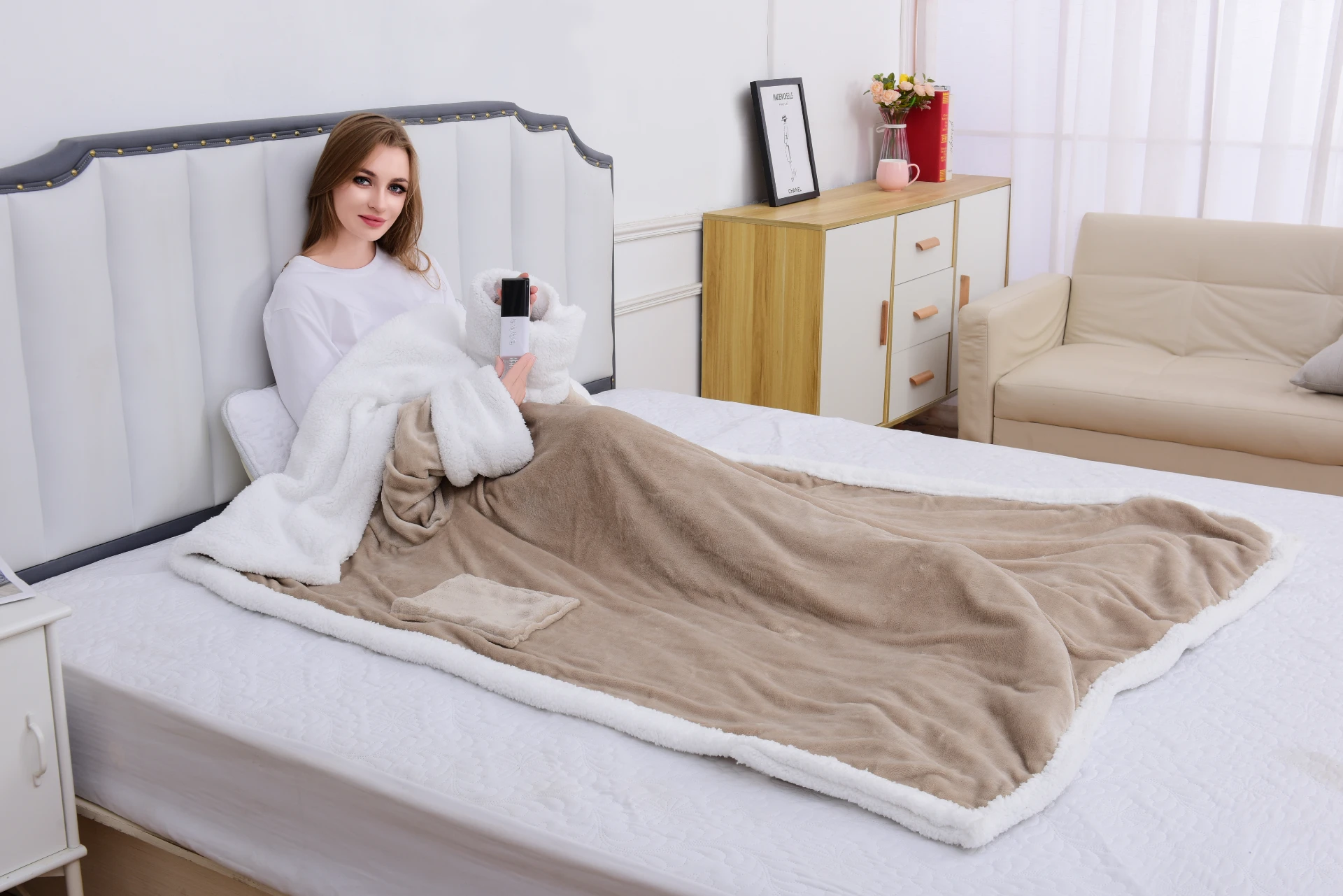
Feb . 20, 2025 12:14 Back to list
Heating Pad
Experiencing lower back pain can significantly impact daily activities, transforming routine tasks into challenging endeavors. One proven method to alleviate this discomfort is the application of heat. While numerous remedies exist, heat therapy is both accessible and effective, backed by scientific research and recommended by health professionals for its therapeutic benefits.
For optimal results, it is crucial to apply heat correctly. Experts advise using heat therapy for sessions lasting between 15 and 30 minutes. This duration allows the muscles to relax and the blood vessels to dilate, enhancing circulation without risking skin burns. It is also recommended to have a layer, such as a thin cloth or towel, between the heat source and skin to minimize the risk of burns, ensuring safety and comfort. Scientific studies have underscored the efficacy of heat in managing lower back pain. According to a study published in the Spine Journal, heat therapy showed significant improvements in disability scores and pain levels when compared to a placebo group. Furthermore, consistent sessions resulted in prolonged benefits, demonstrating heat therapy's role in long-term pain management strategies. Healthcare professionals often endorse a combination approach, integrating heat therapy with other interventions such as physical exercise, massage, and stretching. This holistic method not only tackles symptoms but addresses underlying causes, contributing to sustained back health. Before embarking on heat therapy, individuals with underlying conditions, such as diabetes or skin disorders, should consult healthcare providers. Certain medical circumstances may exacerbate with heat application, requiring tailored advice to ensure safety and efficacy. In conclusion, heat therapy stands as a trusted method for managing lower back pain, reinforced by scientific evidence and medical expertise. By choosing appropriate heat products and adhering to expert guidelines, sufferers of lower back pain can experience significant relief, improving their quality of life and restoring their ability to engage in daily pursuits with ease. As a readily available and non-invasive form of treatment, heat offers a viable option for those seeking relief from the discomfort that often plagues the lower back.


For optimal results, it is crucial to apply heat correctly. Experts advise using heat therapy for sessions lasting between 15 and 30 minutes. This duration allows the muscles to relax and the blood vessels to dilate, enhancing circulation without risking skin burns. It is also recommended to have a layer, such as a thin cloth or towel, between the heat source and skin to minimize the risk of burns, ensuring safety and comfort. Scientific studies have underscored the efficacy of heat in managing lower back pain. According to a study published in the Spine Journal, heat therapy showed significant improvements in disability scores and pain levels when compared to a placebo group. Furthermore, consistent sessions resulted in prolonged benefits, demonstrating heat therapy's role in long-term pain management strategies. Healthcare professionals often endorse a combination approach, integrating heat therapy with other interventions such as physical exercise, massage, and stretching. This holistic method not only tackles symptoms but addresses underlying causes, contributing to sustained back health. Before embarking on heat therapy, individuals with underlying conditions, such as diabetes or skin disorders, should consult healthcare providers. Certain medical circumstances may exacerbate with heat application, requiring tailored advice to ensure safety and efficacy. In conclusion, heat therapy stands as a trusted method for managing lower back pain, reinforced by scientific evidence and medical expertise. By choosing appropriate heat products and adhering to expert guidelines, sufferers of lower back pain can experience significant relief, improving their quality of life and restoring their ability to engage in daily pursuits with ease. As a readily available and non-invasive form of treatment, heat offers a viable option for those seeking relief from the discomfort that often plagues the lower back.
Next:
Latest news
-
Innovations and Applications of Modern Electric Heating Blankets
Jul.07,2025
-
Innovations and Applications of Electric Fleece Blanket Systems
Jul.07,2025
-
Functional and Cozy Solutions for Personalized Warmth
Jul.07,2025
-
Essential Comfort and Warmth Solutions: Heated Blanket Variants
Jul.07,2025
-
Enhancing Coziness with Warmth - Centric Blanket Solutions
Jul.07,2025
-
Enhancing Comfort and Warmth: Electric Blanket Solutions
Jul.07,2025
Realted Products
Copyright © 2025 All Rights Reserved. Sitemap | Privacy Policy



